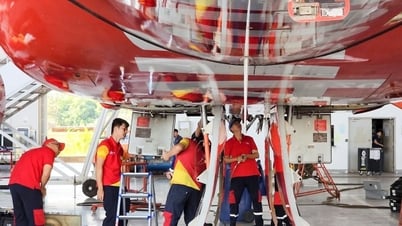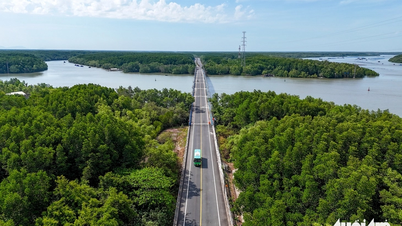
Hoạt động tại một phòng giao dịch của SeABank
Quản trị rủi ro toàn diện theo chuẩn quốc tế Nhằm hỗ trợ tối đa cho các mục tiêu kinh doanh và xây dựng nền tảng vững chắc hướng đến phát triển bền vững, SeABank liên tục nâng cao các phương pháp đánh giá rủi ro toàn diện theo chuẩn mực và thông lệ quốc tế, đồng thời linh hoạt điều chỉnh chính sách theo biến động thị trường, đảm bảo duy trì chất lượng tài sản, tình trạng thanh khoản ổn định và bộ đệm vững chắc. Để củng cố nền tảng vốn dự phòng cho các rủi ro, SeABank đã hoàn thành cả 3 trụ cột Basel II trước thời hạn quy định. SeABank cũng là một trong số ít những ngân hàng tiên phong triển khai và áp dụng Basel III từ tháng 5/2022 với những yêu cầu khắt khe về đáp ứng Tỷ lệ An toàn vốn (CAR), các cấu phần vốn lõi, cấu phần vốn đệm dự phòng, bộ chỉ số quản lý rủi ro thanh khoản. Sau 2 năm triển khai áp dụng, SeABank không ngừng nâng cao các chỉ số về đảm bảo dự phòng vốn an toàn hoạt động và tăng cường sức chịu đựng thanh khoản trước các biến cố. Theo đó, Ngân hàng áp dụng phương pháp IMA (Internal Models Approach) để đo lường chỉ số chịu đựng về thanh khoản, tính vốn về rủi ro thị trường, thực hiện đầy đủ quy trình Đánh giá Nội bộ về mức đủ vốn (ICAAP) để sẵn sàng cho mọi kịch bản. Nhờ đó, Ngân hàng luôn duy trì tỷ lệ CAR ở mức an toàn cao hơn yêu cầu tối thiểu của Ngân hàng Nhà nước (NHNN), với tỷ lệ CAR hợp nhất đạt 13,61% tại thời điểm ngày 31/12/2023. SeABank cũng áp dụng sớm Chuẩn mực Báo cáo tài chính quốc tế (IFRS), bên cạnh Chuẩn mực Kế toán Việt Nam khi lập và trình bày báo cáo tài chính. Qua đó, Ngân hàng tăng cường quản trị và kiểm soát rủi ro thông qua nâng cao khả năng đo lường và quản lý kết quả kinh doanh, tạo dựng cơ sở phân bổ hợp lý nguồn lực để tăng hiệu quả sử dụng vốn. Quản lý rủi ro môi trường, xã hội và thúc đẩy tín dụng có trách nhiệm Bên cạnh việc quản lý các rủi ro trọng yếu vốn có, SeABank cũng chủ động xây dựng, triển khai Hệ thống Quản lý rủi ro môi trường - xã hội (ESMS) và thúc đẩy tín dụng xanh, hướng đến chống biến đổi khí hậu và hiện thực hóa mục tiêu của Chính phủ về chuyển đổi sang nền kinh tế phát thải ròng carbon bằng “0”. Từ năm 2022, SeABank đã triển khai toàn diện việc quản lý rủi ro môi trường và xã hội trong hoạt động tín dụng. Theo đó, 100% giao dịch tín dụng được sàng lọc, phân loại, đánh giá về rủi ro môi trường và xã hội, từ đó xác định các biện pháp quản lý rủi ro môi trường, xã hội phù hợp dựa trên mức độ rủi ro đã nhận diện, đồng thời từ chối những giao dịch có tác động nghiêm trọng không thể khắc phục đối với môi trường, xã hội. Để nâng cao hiệu quả và đẩy mạnh các dự án tín dụng có trách nhiệm, SeABank không ngừng tìm kiếm sự đồng hành, hỗ trợ về tài chính và chuyên môn từ các đối tác quốc tế uy tín, như IFC, DFC, ADB… Qua đó, Ngân hàng tự tin cung cấp các sản phẩm tài chính xanh và tài chính xã hội nhằm hỗ trợ tối đa các doanh nghiệp nhỏ và vừa, doanh nghiệp do phụ nữ lãnh đạo, phát triển theo hướng kinh tế xanh, kinh tế tuần hoàn, đáp ứng các tiêu chí sản xuất khắt khe của thế giới, nâng cao hiệu quả sử dụng tài nguyên, năng lượng. Quản trị rủi ro trên nền tảng công nghệ và số hóa Để củng cố nền tảng QTRR tạo đà cho phát triển kinh doanh, SeABank liên tục đẩy mạnh triển khai chiến lược “Hội tụ số”, tập trung đầu tư các hệ thống, áp dụng công nghệ tiên tiến nhằm tăng cường kiểm soát, ngăn ngừa và phát hiện sớm các rủi ro, nhờ đó duy trì hoạt động an toàn, liên tục. SeABank đã đầu tư áp dụng công nghệ tiên tiến để nâng cao hiệu quả cho công tác quản lý, kiểm soát và phát hiện sớm rủi ro, ngăn ngừa rủi ro trên nhiều phương diện, như khai thác Big Data để có cái nhìn toàn diện, kịp thời về các vấn đề phát sinh trong giao dịch và xây dựng công cụ nhận diện các giao dịch có dấu hiệu đáng ngờ; ứng dụng AI, Machine Learning, Data Analytics vào xây dựng các mô hình nâng cao chất lượng đánh giá rủi ro; phát triển trung tâm dữ liệu… Trong đó, SeABank đặc biệt ưu tiên nguồn lực để ngăn ngừa rủi ro về an toàn công nghệ và bảo mật thông tin khách hàng trong thời kỳ chuyển đổi số thông qua đầu tư hệ thống phòng chống thất thoát dữ liệu; các dự án QTRR và tăng cường bảo mật cho thẻ như Digital Authentication Framework hay Mastercard Proactive Scanning; nâng cấp công nghệ eKYC, đảm bảo tích hợp dữ liệu dân cư quốc gia và xác thực căn cước công dân gắn chip giúp tăng độ bảo mật giao dịch… Nhờ đó, SeABank được chứng nhận đáp ứng các tiêu chuẩn cao nhất về an toàn bảo mật thông tin theo ISO 27001, đồng thời trở thành tổ chức đầu tiên tại Việt Nam được trao Chứng chỉ PCI DSS 3.2 về an toàn, bảo mật cho hệ thống thẻ thanh toán. SeABank nhiều năm liên tiếp được Moody’s xếp hạng tín nhiệm cơ sở (BCA) ở mức B1. Đặc biệt, năm 2023, tổ chức này đã xếp hạng SeABank ở mức Ba3 cho nhiều danh mục quan trọng với triển vọng Ổn định. Moody’s cũng đánh giá cao sự cải thiện trong việc quản lý chất lượng tài sản, an toàn vốn cao, hoạt động cho vay và tính thanh khoản ổn định. Nguồn: https://baodautu.vn/seabank-phat-trien-ben-vung-tren-nen-tang-quan-tri-rui-ro-vung-chac-d228677.html






































































































![[Infographic] Năm 2025, 47 sản phẩm đạt OCOP quốc gia](https://vphoto.vietnam.vn/thumb/402x226/vietnam/resource/IMAGE/2025/7/16/5d672398b0744db3ab920e05db8e5b7d)





Bình luận (0)